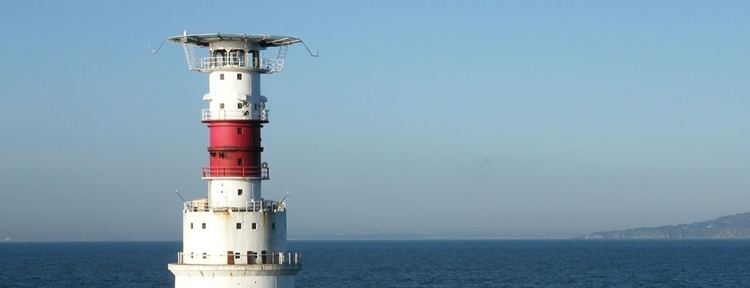Original lens catoptric Height 31 m Automated 7 April 1992 | Year first constructed July 1963–July 1965 Focal height 29 m Construction Reinforced concrete Year first lit 1965 | |
 | ||
Tower shape telescopic cylindrical tower with four balconies, lantern and helipad Markings / pattern white tower with a red band Intensity two million candlepowers (three in fog) | ||
Kish bank what matters to you dr jeanmenne
The Kish Bank (Irish: Banc na Cise) is a shallow sand bank about seven miles (11 km) off the coast of Dublin, in Ireland. It is marked by the Kish Lighthouse, a landmark well known to sailors and ferry passengers passing through Dublin Bay and Dún Laoghaire harbour.
Contents
- Kish bank what matters to you dr jeanmenne
- Aquarius sac kish bank 19 may 2010 wmv
- The lighthouse
- Burials at Sea
- References
Many ships were wrecked on these shallows. The Vesper was lost in January 1876; the Norwegian MV Bolivar ran aground on the Kish Bank during a snow storm on 4 March 1947; both wrecks are frequently dived. A mailboat operated by the City of Dublin Steam Packet Company between Kingstown (later Dún Laoghaire) and Holyhead, the RMS Leinster, was torpedoed and sunk by a German submarine on 10 October 1918. She went down four miles (6 km) east of the Kish Lighthouse with over 500 lives lost, the greatest single loss of life in the Irish Sea. Fifty-five wrecks are listed for the Kish Bank area at Irish Wrecks Online.
In 2000, the Department of Marine and Natural Resources awarded licenses to allow detailed studies to be carried out on the Kish and Bray Banks in relation to the construction of a large offshore wind farm. Press reports at the time suggested 100 or more wind turbines might be erected.
Aquarius sac kish bank 19 may 2010 wmv
The lighthouse
Before the present Kish Lighthouse was installed in 1965, the sand bank had been signalled by a lightship since 1811. An attempt to build a lighthouse in 1842 was abandoned because of destruction caused by severe weather. The first Irish electric lightvessel, the Gannet, was installed in 1954.
The Commissioners of Irish Lights decided in 1960 to erect a reinforced concrete lighthouse with helicopter landing pad on top. The lighthouse was built in the Coal Harbour of Dún Laoghaire, and designed by Christiani & Nielsen. The first section of lighthouse cracked while it was being built and had to be discarded. The second telescopic lighthouse was completed, towed to its station, extended to its full height and installed in 1965, with a projected lifetime of 75 years. The sand bank was bored in 1961 and a seismic survey revealed about 300 feet (91 m) of sand at the site. Construction began in Dún Laoghaire in 1963. The completed structure was towed from the harbour out to the sandbank on 29 June 1965. The tower was raised on 27 July 1965 to its full height of 100 feet (30 m), with twelve floors inside, and with a 32-foot (9.8 m) wide helicopter platform on top.
The lightvessel was removed on 9 November 1965 and the new lighthouse replaced it, operating at between two and three million candlepowers, depending on visibility conditions. The beam is visible for 27 nmi (50 km). The lighthouse was automated on 7 April 1992, and the keepers came ashore.
Burials at Sea
At the time when the Department of the Marine permitted burial at sea (of people who had died on land) they normally required the burial to occur at the Kish Bank where the tides are strong, and where the sands are always moving.
